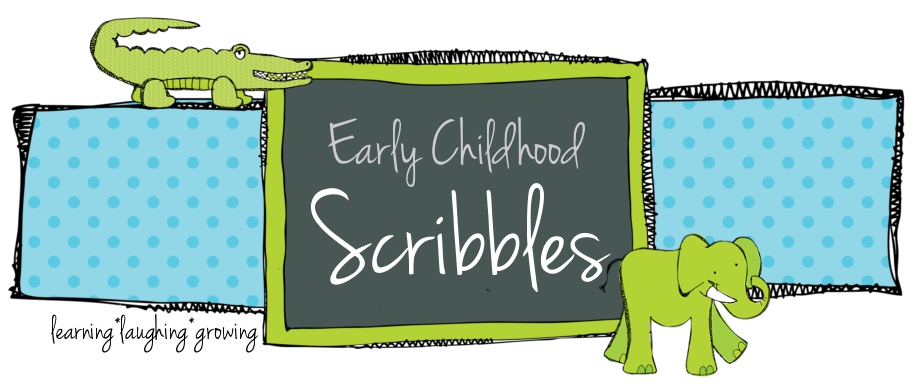Find the Right Spot
The first decision that needs to be made, is where is the best spot for a library. I recommend a quiet area of the classroom. The block and dramatic play centers tend to be very loud, so a quiet library should be far away from these centers. I also like to put my library next to my writing center. Many students like to use books as an inspiration for their writing.
Decide How to Display Books
Here are a few things to consider while deciding how to display books.
- Experts recommend having 10-15 books available per child. (That's 180 books in my classroom library!)
- Books should be displayed with the front of the book facing out. (This takes up more room then just having the books lined up on a shelf with the spines showing)
- Preschoolers are going to be accessing the books. Think about height, ease of getting to and putting away books.
Here are a few ideas for displaying books;
These slotted book shelves are a great way to display books by their covers. I use this area to display books that support our current theme.
(The books in this picture are from my All About Me theme)
I'm limited on furniture, so I also use book boxes to display books. These are actually locker crates that I use to display my books. They are great because they can sit directly on the floor. They usually run around $3 a piece during back to school season.
Here is a great idea from Kindergarten Kindergarten. The black bins on the lower shelves are dish drainer buckets. You can find them in the kitchen section in Wal-Mart for a few bucks a piece. (I'm actually purchasing a book shelf so I can use these bins to expand my library, since I still have not reached the 180 book mark)
Remember that books can be displayed ANYWHERE in the classroom. They don't all have to be in the "library". I have a book bin (They're actually ice buckets from Wal-mart. Less then $2 a piece!) in every center in my classroom.
Choose What Books to Include in the Library
If you're book crazy like me, you may not be able to put out all your books at the same time. (This is a good thing! My students love it when I switch out books) Think about the following questions to decide what the best books are to include in your library.- Are there any books you want out ALL the time? (Such as class favorites, class made books, cultural books, all about me books etc.)
- What are you focusing on this week/month?
- Seasonal/Holiday books
- Books by the same author (It's my goal this year to always have at least one author "series" out at all times)
- 50/50 - Our ELA curriculum this year is focusing on using 50% fiction and 50% non-fiction.
Make it Comfortable and Inviting
You chose the perfect spot for your library, figured out the best way to display your books, and chose what books you want to include in your classroom library . . . you're almost there! All that's left is making your library comfortable and inviting. You put a lot of thought into this space and you want to make sure the students USE this wonderful space to read.
- Pillows (I found black pillows at Garden Ridge and my TA sewed some fabric into pillow covers)
- Bean Bags
- Rocking Chair
- Stuffed Animals (Kohl's is a great place to find stuffed animals that go with different books. And the proceeds go to a great cause)
- Carpet
Here are a couple other great ideas:
Bath mats can be picked up and moved by students. The dollar tree often has carpet squares for $1.
A child sized couch makes an inviting place for children to sit and read.
Don't miss my post about teaching preschoolers how to care for books.

















